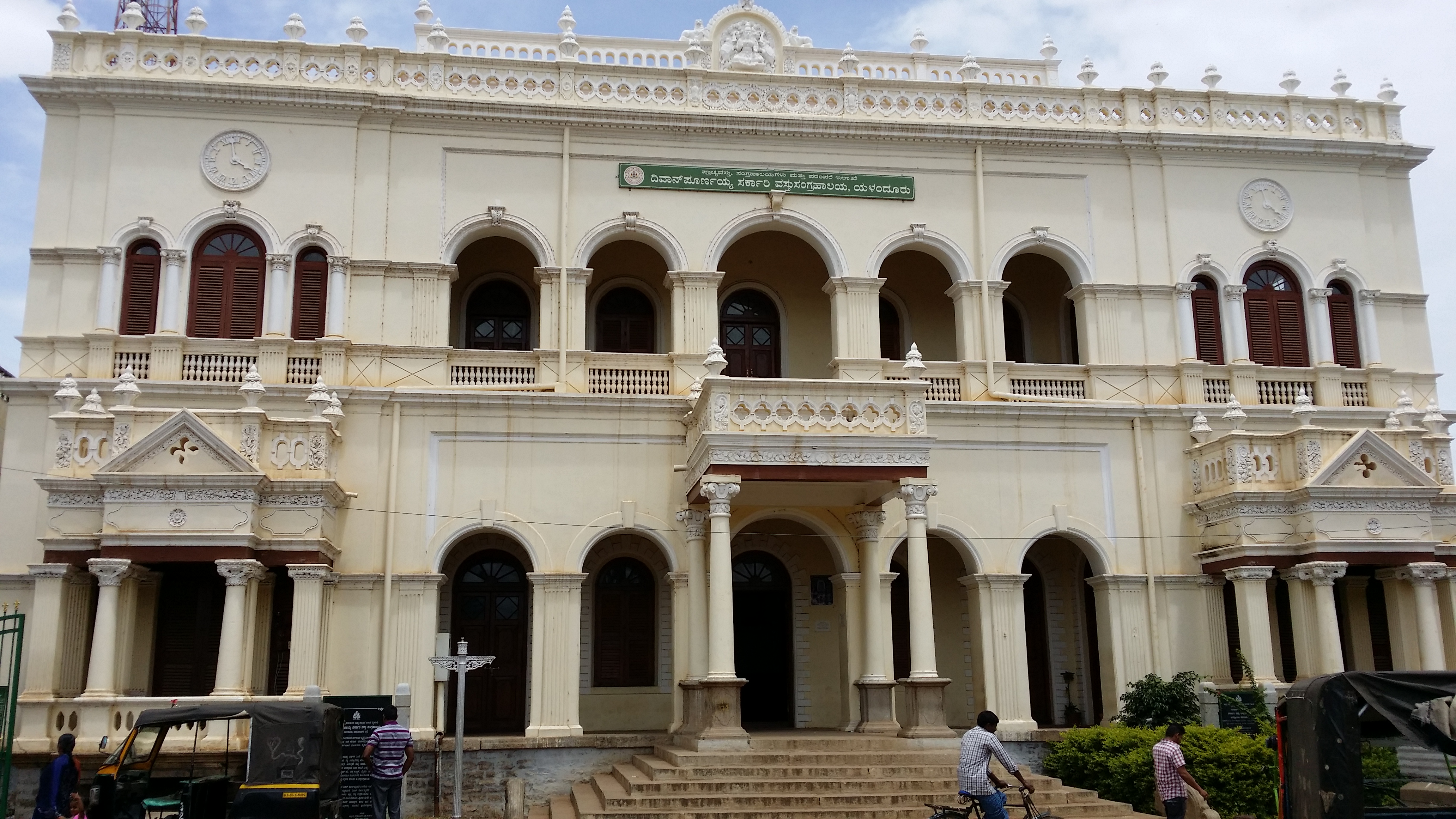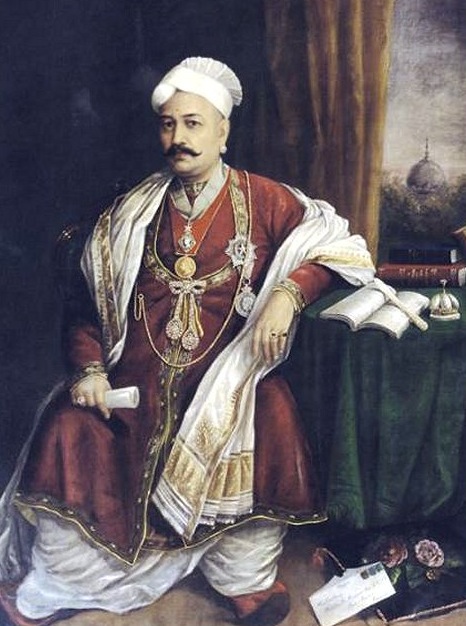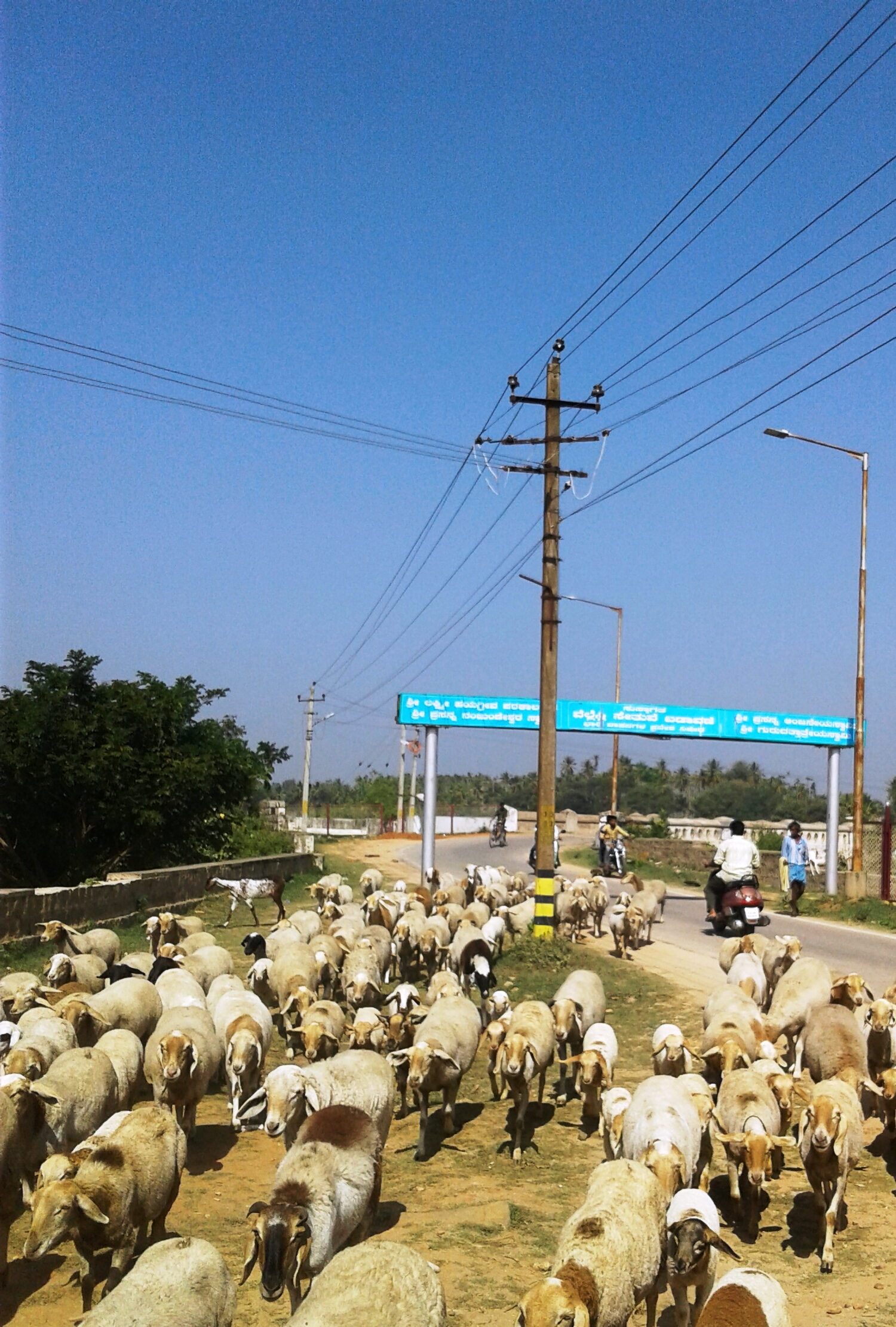|
Purnaiah
Purnaiah (Purniya) (1746 – 27 March 1812), aka Krishnacharya Purniya or Mir Miran Purniya was an Indian Administrator and statesman and the 1st Diwan of Mysore. He has the rare distinction of governing under a sultan and a maharaja, Tipu and Krishnaraja Wadiyar III. He advised the monarchs of the Mysore kingdom from 1782 to 1811. He was known for his skill with accounts, prodigious memory and proficiency in several languages. He was also a wartime military commander while serving under Tipu Sultan. After Tipu Sultan's defeat, he served as the Diwan of Krishnaraja Wadiyar III. Krishnaraja was educated and trained by Purniah in his early years. Early years and rise Purniah came from an orthodox Deshastha Madhva Brahmin family. He was born in 1746 CE. He lost his father at the age of eleven and had to seek employment to support his family. He started writing accounts at a trader's shop. This grocer had close contact with a rich merchant, Annadana Shetty, who supplied lar ... [...More Info...] [...Related Items...] OR: [Wikipedia] [Google] [Baidu] |
Deshastha Brahmin
Deshastha Brahmin is a Hindu Brahmin subcaste mainly from the Indian state of Maharashtra and northern area of the state of Karnataka. Other than these states, according to authors K. S. Singh, Gregory Naik and Pran Nath Chopra, Deshastha Brahmins are also concentrated in the states of Telangana , Andhra Pradesh and Madhya Pradesh Author Pran Nath Chopra and journalist Pritish Nandy says, "Most of the well-known saints from Maharashtra, Karnataka and Andhra Pradesh were Deshastha Brahmins". The mother tongue of Deshastha Brahmins is either Marathi or Kannada. Some Deshasthas who settled in Telugu states also adopted Telugu as their mother tongue. Over the millennia, the Deshastha community has produced Mathematicians such as Bhāskara II, Sanskrit scholars such as Bhavabhuti; Bhakti saints such as Dnyaneshwar, Sripadaraja, Eknath, Purandara Dasa, Samarth Ramdas and Vijaya Dasa; Logicians such as Jayatirtha and Vyasatirtha. The traditional occupation of Deshasth ... [...More Info...] [...Related Items...] OR: [Wikipedia] [Google] [Baidu] |
Diwan Of Mysore
The diwan of Mysore, also spelled dewan of Mysore, synonymously the prime minister of Mysore, was the ''de-facto'' chief executive officer of the government of the Kingdom of Mysore and the prime minister and royal adviser to the Maharaja of Mysore. The role evolved in name and responsibilities since the foundation of the fiefdom of Mysore in 1350 and its proper reformation into a kingdom in the following centuries until the kingdom's full abolishment in 1950. With the constitution of India into a republic in 1950, the position was replaced by Chief Minister of Mysore (later renamed Chief Minister of Karnataka). From offering minor political advice to the monarch as ''amatya'' (Sanskrit for minister) like in the Vijayanagara Empire to later acting as a major military chieftain as ''dalvoy'' (Kannada for military chief) like in other southern kingdoms to being the head of the government as '' diwan'' ( Persian/Urdu for accountant or chief adviser) like in the Ottoman Empire, t ... [...More Info...] [...Related Items...] OR: [Wikipedia] [Google] [Baidu] |
Kingdom Of Mysore
The Kingdom of Mysore was a realm in southern India, traditionally believed to have been founded in 1399 in the vicinity of the modern city of Mysore. From 1799 until 1950, it was a princely state, until 1947 in a subsidiary alliance with British India. The British took Direct Control over the Princely State in 1831.Rajakaryaprasakta Rao Bahadur (1936), p383 It then became Mysore State (later enlarged and renamed to Karnataka) with its ruler remaining as Rajapramukh until 1956, when he became the first Governor of the reformed state. The kingdom, which was founded and ruled for most part by the Hindu Wodeyar family, initially served as feudatories under the Vijayanagara Empire. The 17th century saw a steady expansion of its territory and during the rule of Narasaraja Wodeyar I and Chikka Devaraja Wodeyar, the kingdom annexed large expanses of what is now southern Karnataka and parts of Tamil Nadu to become a powerful state in the southern Deccan. During a brief Muslim rule, ... [...More Info...] [...Related Items...] OR: [Wikipedia] [Google] [Baidu] |
Mysore Kingdom
The Kingdom of Mysore was a realm in southern India, traditionally believed to have been founded in 1399 in the vicinity of the modern city of Mysore. From 1799 until 1950, it was a princely state, until 1947 in a subsidiary alliance with British India. The British took Direct Control over the Princely State in 1831.Rajakaryaprasakta Rao Bahadur (1936), p383 It then became Mysore State (later enlarged and renamed to Karnataka) with its ruler remaining as Rajapramukh until 1956, when he became the first Governor of the reformed state. The kingdom, which was founded and ruled for most part by the Hindu Wodeyar family, initially served as feudatories under the Vijayanagara Empire. The 17th century saw a steady expansion of its territory and during the rule of Narasaraja Wodeyar I and Chikka Devaraja Wodeyar, the kingdom annexed large expanses of what is now southern Karnataka and parts of Tamil Nadu to become a powerful state in the southern Deccan. During a brief Musli ... [...More Info...] [...Related Items...] OR: [Wikipedia] [Google] [Baidu] |
Yelandur
Yalandur is a taluk and town in Chamarajanagar district in southern Karnataka, India. It has historic and cultural importance in this region. Along with three other taluks, it was officially included into Chamarajanagar district when the district was notified upon bifurcation of Mysore district in 1997. Historic importance It was under the rule of the Vijayanagara Empire in the 15th and 16th centuries. When it came under the rule of Wadiyar dynasty of Mysuru, in the early 18th century, Dewan Purnaiah, a notable Dewan of Kingdom of Mysore from here, was gifted the Jagir of Yalandur and its surrounding villages by Krishnaraja Wodeyar III - the King of Mysuru, in appreciation of the great service rendered to the Mysuru State by Purnaiah as Dewan or the Prime Minister. Purnaiah was instrumental in making the Mysore State into a strong empire and greatly admired, as son of the soil, for having developed the region with several visionary works. Economy Geography Yelandur ... [...More Info...] [...Related Items...] OR: [Wikipedia] [Google] [Baidu] |
Mummadi Krishnaraja Wodeyar
Krishnaraja Wadiyar III (14 July 1794 – 27 March 1868) was the twenty-second maharaja of the Kingdom of Mysore. Also known as Mummadi Krishnaraja Wadiyar, the maharaja belonged to the Wadiyar dynasty and ruled the kingdom for nearly seventy years, from 30 June 1799 to 27 March 1868. He is known for his contribution and patronage to different arts and music during his reign. He was succeeded by his adopted son, Chamarajendra Wadiyar X. Early years Krishnaraja Wadiyar III, who was born at Srirangapatna, was the son of Khasa Chamaraja Wadiyar IX (who was born at Arikottara, now Chamarajanagar) and his first wife, Maharani Kempananjammani Avaru.Annals of The Mysore Royal Family Part-1: A publication by the Royal Family of Mysore: 1916 Maharani Lakshmi Ammani Devi, his adoptive grandmother, played a major role in the education and upbringing of her adopted grandson, Krishnaraja Wadiyar III, and was instrumental in his ascendancy to the Mysore throne.Rajakaryaprasakta Rao Bahadu ... [...More Info...] [...Related Items...] OR: [Wikipedia] [Google] [Baidu] |
Fourth Anglo-Mysore War
The Fourth Anglo-Mysore War was a conflict in South India between the Kingdom of Mysore against the British East India Company and the Hyderabad Deccan in 1798–99. This was the final conflict of the four Anglo-Mysore Wars. The British captured the capital of Mysore. The ruler Tipu Sultan was killed in the battle. Britain took indirect control of Mysore, restoring the Wadiyar dynasty to the Mysore throne (with a British commissioner to advise him on all issues). Tipu Sultan's young heir, Fateh Ali, was sent into exile. The Kingdom of Mysore became a princely state in a subsidiary alliance with British India covering parts of present Kerala–Karnataka and ceded Coimbatore, Dakshina Kannada and Uttara Kannada to the British. Background Napoleon Bonaparte's landing in Ottoman Egypt in 1798 was intended to further the capture of the British possessions in India, and the Kingdom of Mysore was a key to that next step, as the ruler of Mysore, Tipu Sultan, sought France as an ally and ... [...More Info...] [...Related Items...] OR: [Wikipedia] [Google] [Baidu] |
Bargir Bakshi Balaji Rao
Bargir Bakshi Balaji Rao was the 2nd Diwan of Mysore. He governed from April 1811 - January 1812. Bargir Bakshi Balaji Rao was the immediate successor of Purnaiya. Balaji Rao was succeeded by Savar Bakshi Rama Rao in February 1812. Before being appointed as the Diwan, Bakshi Balaji Rao served as Karnik under Haidar Ali and Tipu Sultan at Devanahalli and Madhugiri and later was promoted as Bhakshi. He was also the shanubhog of Kysapura, Doddaganagavadi, Ibbalikehalli, Chowdaeshwarei Halli, Yerehalli, Arehalli, etc the surrounding villages of closepet. Later he became the Prime Minister of Mysore Kingdom. References {{reflist Diwans of Mysore ... [...More Info...] [...Related Items...] OR: [Wikipedia] [Google] [Baidu] |
Srirangapatna
Srirangapatna is a town and headquarters of one of the seven Taluks of Mandya district, in the Indian State of Karnataka. It gets its name from the Ranganthaswamy temple consecrated at around 984 CE. Later, under the British rule the city was renamed to Seringapatnam. Located near the city of Mandya, it is of religious, cultural and historic importance. The monuments on the island town of Srirangapatna have been nominated as a UNESCO World Heritage Site, and the application is pending on the tentative list of UNESCO. History Srirangapatna has since time immemorial been an urban center and place of pilgrimage. During the Vijayanagar empire, it became the seat of a major viceroyalty, from where several nearby vassal states of the empire, such as Mysore and Talakad, were overseen. When perceiving the decline of the Vijayanagar empire, the rulers of Mysore ventured to assert independence, Srirangapatna was their first target. Raja Wodeyar I vanquished Rangaraya, the then viceroy ... [...More Info...] [...Related Items...] OR: [Wikipedia] [Google] [Baidu] |
Tipu Sultan
Tipu Sultan (born Sultan Fateh Ali Sahab Tipu, 1 December 1751 – 4 May 1799), also known as the Tiger of Mysore, was the ruler of the Kingdom of Mysore based in South India. He was a pioneer of rocket artillery.Dalrymple, p. 243 He introduced a number of administrative innovations during his rule, including a new coinage system and calendar, and a new land revenue system, which initiated the growth of the Mysore silk industry. He expanded the iron-cased Mysorean rockets and commissioned the military manual '' Fathul Mujahidin''. He deployed the rockets against advances of British forces and their allies during the Anglo-Mysore Wars, including the Battle of Pollilur and Siege of Srirangapatna. Tipu Sultan and his father used their French-trained army in alliance with the French in their struggle with the British, and in Mysore's struggles with other surrounding powers: against the Marathas, Sira, and rulers of Malabar, Kodagu, Bednore, Carnatic, and Travancore ... [...More Info...] [...Related Items...] OR: [Wikipedia] [Google] [Baidu] |
Mysorean Rockets
Mysorean rockets were an Indian military weapon, the iron-cased rockets were successfully deployed for military use. The Mysorean army, under Hyder Ali and his son Tipu Sultan, used the rockets effectively against the British East India Company during the 1780s and 1790s. Their conflicts with the company exposed the British to this technology further, which was then used to advance European rocketry with the development of the Congreve rocket in 1805. Technology and deployment There was a regular rocket corps in the Mysore Army, beginning with about 1,200 men in Hyder Ali's time. During the Second Anglo-Mysore War, Colonel William Baillie's ammunition stores are thought to have been detonated by a stray rocket at the Battle of Pollilur in 1780, which contributed to British defeat in the battle. At Pollilur rockets restricted East India Company vanguard movement, skimming along the surface, lacerating troops, and in one specific instance, shattered an Ensign’s leg. With r ... [...More Info...] [...Related Items...] OR: [Wikipedia] [Google] [Baidu] |







